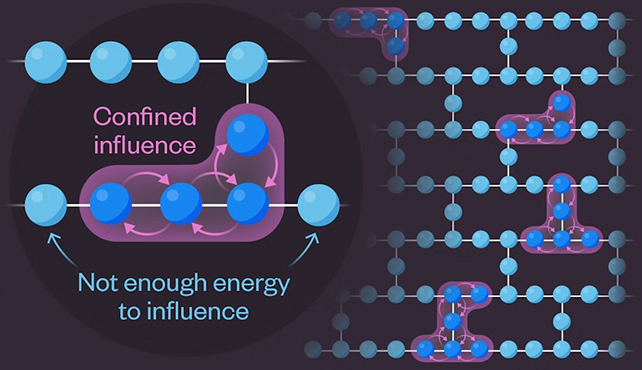Earlier this year, experiments disrupted expectations by pushing the boundaries of what classical computers were thought capable of. Old-school binary technology not only solved a problem considered unique to quantum processing, but also performed better at it.
Now physicists at the Center for Computational Quantum Physics at the Flatiron Institute in the US have an explanation for this achievement that could help better define the boundaries between the two radically different methods of number crunching.
The problem involves simulating the dynamics of a so-called transverse field Ising model (TFI), which describes the alignment of quantum spin states between particles distributed in space.
Given the nature of the problem, it was considered a perfect subject to test the current limits of quantum computing, which uses the mathematics of probability behind unobserved particles that exist in an undecided haze of states.
As successful as that test was, follow-up experiments have shown that classical computers can do this too.
According to Joseph Tindall and Dries Sels of the Flatiron Institute, this is possible because of a behavior called confinement, in which extremely stable states appear in the interconnected chaos of undecided particle properties, giving a classical computer something it can model.
“We haven’t really introduced any advanced techniques,” says Tindall. “We brought together a lot of ideas in a succinct and elegant way that made the problem solvable.”

Key to the study was identifying the presence of incarceration in the TFI model and its use. Incarceration is not a new phenomenon, but until now it has not been associated with the model.
Confinement keeps particles in smaller clusters, limiting the available energy and creating barriers to the entanglement patterns that can propagate in a system – those probability combinations that characterize quantum physics. It’s a bit like solving just one small corner of a giant puzzle, instead of the entire puzzle.
Through a series of simulations and calculations, the research team was able to demonstrate that classical computer algorithms could describe what was happening in the TFI model, but more efficiently and accurately than a quantum computer.
“In this system, the magnets won’t just suddenly pop up,” says Tindall. “They will actually just fluctuate around their initial state, even on very long time scales.”
“It’s very interesting from a physics perspective, because that means the system remains in a state that has a very specific structure and is not just completely disordered.”
The findings set limits on what we can expect from the potential of quantum computers; specifically what tasks they could perform that traditional computer systems cannot (we can cross these off the list now). Much of that promise has yet to be realized, however, and scientists are still pushing these systems to see what’s possible.
“There is a line between what can be done with quantum computing and what can be done with classical computers,” says Tindall.
“Right now, that line is incredibly vague. I think our work will help clarify that line a little more.”
The research was published in Physical Assessment Letters.
